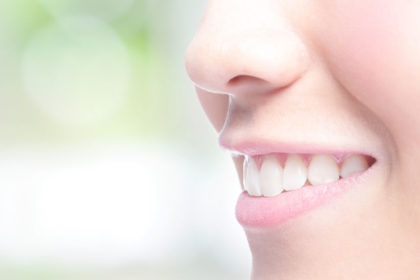A headache can have many causes, which is why it’s so hard to come up with a universal remedy. The most important division is between a headache and a migraine, with the added twist that if you are prone to migraines, a relatively innocent headache can morph into a debilitating migraine.
Best is to address a headache quickly to prevent it from this ghastly transformation, and we prepared a few of the most common causes and remedies for you to asses and try out. Some are a doddle to handle and you’ll feel better quite fast, some are a bit trickier and home remedies can only bring a partial relief at first, but hopefully they can put you on a good path.
Cause #1: Dehydration
Cause #2: Migraine
Cause #3: Lack of sleep or changes in sleep pattern
Cause #4: Stress
Cause #5: Cervical spine misalignment
Cause #6: Hangover
LIST OF UNIVERSAL REMEDIES
Potential cause #1: Dehydration
This is a cause that’s the easiest to handle, and surprisingly common. It can also be a contributing factor even if your headache was triggered by another cause, so unless you’re super-conscious about your drinking regimen and never leave the house without a bottle of water, this should be your go-to solution whenever your head starts giving you trouble. The earlier you catch it, the faster (and easier) you can get rid of it.
Here, the problem is that the lack of fluids in your body causes the brain to actually shrink somewhat which is what’s causing the pain. It can be mild to severe and will be accompanied by some other signs of dehydration, such as dark urine, dizziness, confusion, sticky mouth or loss of skin elasticity.
The best way to handle it is (moment of suspense…) sufficient fluid. For very best results, drink fluids with electrolytes. Enjoy some alcohol-free beer, apple or cherry juice diluted with water (diluted apple juice is a great rehydration drink which actually beats pharmacy-bought rehydration solutions as this study shows). Have some coconut water, or a nice bowl of bone broth or chicken soup or, if you know a good brand, electrolyte sports drink that isn’t overloaded with sugar and questionable ingredients.
Dehydration is also behind part of the headache famously linked to hangover, so rehydration along with B vitamins, especially B1, should help you relieve the unpleasant symptom.
Some people are more sensitive to dehydration than others and headache might even be one of your first symptoms. Enjoying a refreshing drink when the tensions start is usually a good idea and can only help, even if your headache doesn’t stem from this cause.
You can be part of the yay, oh-so-lucky 15% of the population which suffers from migraines. If you’re not sure, this type of headache is usually happening on one side of the head and is sometimes preceded by tell-tale symptoms – aura – of worsened eyesight, possibly even visual disturbances, such as a zig-zaggy pattern which slowly expands to cause temporary loss of vision in one or both eyes. You can also experience problems speaking, muscle weakness or numbness/tingling in one side of your face. These symptoms are rare, but they could also be a sign of a more serious condition, such as a stroke or retinal detachment, so if this is something you’re experiencing for the first time, seek medical help immediately (and waste no time if the onset of these symptoms is sudden, if you have problems smiling with both sides of the face, if you have a problem raising both arms and keeping them there or sticking your tongue and keeping it centered)!
After a short time of aura, the moderate to severe pain of migraine headache joins in, along with nausea.
You probably don’t need to be recommended to seek a quiet, dark place to rest etc., that’s an automatic human instinct. But there are a few other things you can do to help yourself:
- Oxygen therapy. This relatively unknown yet simple approach has proven most effective against the rare and terrible cluster headaches (see this 2009 study), but migraine headache sufferers have also benefited from it (see study). Consult your doctor if this is something for you, they may even give you a prescription, but more importantly, rule out any conditions which would contradict this type of treatment, such as cystic fibrosis, emphysema etc.
You can get a small portable oxygen concentrator for your home (it costs from around 350 USD and needs nothing more to run than electricity), or test first if it is the right thing for you – you can rent the device, or try a reputable wellness place near you which offers oxygen therapy (a lot of them do, but absolutely avoid any extra scent/aroma they might offer as it can serve as a further headache trigger, plus inhaling potentially oily substances is generally not a great idea for your lungs). Since this therapy doesn’t require any other attention from the place then switching on a machine, you can usually just pop in without a booking and give it a go. In any case, religiously follow instructions of either the oxygen provider, or the machine, and always the doctor. Oxygen, though the stuff of life, is medication and if improperly used or overdosed, can be toxic.
- Try acupressure. A 2010 study looked at acupressure as a method of treating headaches and found it superior to muscle relaxant medication. The study used trigger points BL2, GV20, GB20, TH21, and GB5. BL2 is on the inner end of the eyebrow (nearer the nose), GV20 is at the very top of the head, GB20 are two points where the big neck muscles join the skull at the back of your head – on each side of the little groove at the base of your skull (you can sometimes feel it as very tender when you have a headache). TH21 is where the upper part of your ear meets your face, and GB5 is roughly at the top of your temple (see photo for better orientation).
- Many sources recommend ginger. It is a natural painkiller which also helps keep nausea on a leash, and hopefully you will be among the happy majority who experience relief. In this 2013 study, ginger powder offered roughly the same efficacy as the drug sumatriptan, with fewer adverse effects.
- Get a massage. Regular (weekly) massages mean fewer migraine attacks, better sleep and generally improved stress resistance, as shown in this 2006 study. But even getting a massage of the neck and shoulders when migraine already struck should bring you relief, this small study reported pain reduction of 68% – so definitely worth a go!
Potential cause #3: Lack of sleep or changes in sleep pattern
You’ll probably be fine after one all-nighter, but longer sleep deprivation or changes in sleep patterns (people working shifts could talk) might give your head another reason to feel bad. It might switch on a tension headache (dull, pressing tightness, usually circles your head, is mild to moderate, physical activity usually doesn’t aggravate it) or a migraine (half of your head is affected, moderate to severe pain, often accompanied by blurry vision and nausea).
It doesn’t help that lack of sleep lowers your pain threshold as suggested by this 2015 study. Another not so pleasant news is that sleep quality, not only length of sleep, plays a key role in sleep deprivation headaches. So if you aren’t aware of any recent reduction in your hours of shut-eye, you might want to consider making some changes to your sleeping arrangements – we provide some ideas in this article.
To tame this headache, just to be sure, enjoy an electrolyte beverage during the day to keep things at bay – dehydration can be a contributing factor. If the headache/migraine didn’t go into full-on rage by the time you can go to bed, you should be fine by the morning (provided you have at least 6.5 hours of sleep ahead of you). If the heat is on and you’re trying not to move your eyeballs come evening, there are several options. You can go the traditional route and pop a pill which helps the headache (basically the only thing you can think about at this point, let’s be frank). This is a fast solution, but it leaves something to be desired for your liver, kidneys or stomach. Not much of an issue if you don’t do this too often, but if you’re looking for alternative ways how to relieve a headache, there are a few options which we cover below.
General precautions to help you prevent this type of headache obviously include sufficient sleep, but it should also help to make sure you’re getting enough B-vitamins, particularly B12 (cobalamin), B2 (riboflavin), B1 (thiamine), B6 (pyridoxine), B5 (pantothenic acid) and vitamin D. If you want to take a supplement, brewer’s yeast and fish oil is a good natural bet. Here are some good dietary sources of these vital nutrients that would make good staples in your diet, since vitamins of the B complex are vital to your overall health. They play an active role in your neurological functions, cellular metabolism and energy levels:
The most plentiful natural sources of B12 are clams and beef liver – a 3 ounce serving will give you around 3,000% of your recommended daily allowance (meaning that most of it will just be quietly passing through, so no worries.) Significantly lower but still very good sources include fish (salmon, trout or tuna), nutritional yeast, beef or dairy.
B2 is best found in dairy products and eggs, leafy green vegetables, legumes and various nuts and seeds.
Good sources of B1 include lean pork, salmon, mussels, flax seeds, beans and peas, and asparagus.
Vitamin B5 is naturally found in beef liver, egg yolks, chicken breast, sunflower seeds, avocado, and tuna. The bacteria in our intestines synthesize some B5 for us, although it is not known how much of it we’re actually using. In any case, it’s a good idea to keep the intestines a comfy home to them with prebiotics such as garlic, onions or leeks.
B6 can be naturally found in chickpeas, beef liver, tuna or salmon, chicken or turkey, and potatoes or bananas.
Best sources of vitamin D is fatty fish like tuna, salmon or mackerel (or fish oil), beef liver, egg yolks or cheese – and of course sunlight, but given our lifestyle and use of sunscreen, it’s probably not good to rely on it fully.
When the stress or sensory attacks from all sides become too much, you can get a tension headache. It may come from a very stressful situation, straining your eyes too much when reading (you may need new glasses or just a bit of a break), being in the vicinity of strong smells (even pleasing ones) for too long, an infection, or overwork. Your headache will most probably be dull and might feel like a pressure in your forehead or like a band around your head.
To help this headache, aside from taking a painkiller, you can:
- take some magnesium (magnesium glycinate, citrate or lactate for best results). It will help relax tense muscles which can contribute to the headache, and magnesium as such has nice calming effects
- lie down in a dark, quiet room, possibly fall asleep
- take B-vitamins (see #2 above for best sources)
- get regular massages! It isn’t just pleasant, but also brings relief from tension headache, as shown for example in this 2002 study.
Potential cause #5: Cervical spine misalignment
All too often, a headache can come from problems with your neck. The typical symptoms include a stiff neck, pain around the eyes and a pain usually in one side of the head. Unfortunately, if you’re prone, this headache can trigger an actual migraine and then it’s anybody’s game. If you have the above symptoms or notice that a certain neck position sets off a headache, try seeing a physiotherapist or a chiropractor, and do exercises to strengthen cervical spine. Experiment a bit with your pillows to find which is the best for you – it can be an anatomical pillow, or perhaps just a very small one, or maybe a regular big one that you position under your neck and but away from underneath your shoulders. In general, your head shouldn’t be propped up in a steepish angle.
For immediate help, do some stretching, relax and pop some magnesium (there are many forms, but for best results, go for magnesium citrate, lactate or magnesium glycinate). It will likely help you sleep, so take that into account. A gentle massage or a warm shower should also help.
Cause-wise, a hangover is a rather unappetizing cocktail of dehydration, dilated blood vessels in the brain, poisoning and nutrient depletion. Whether or not you decide to zap it with a pill, it will help you to focus on these causes and
- Replenish fluids and electrolytes (alcohol-free beer, juice diluted with water – apple or cherry for preference, coconut water, nice bowl of broth or a good, not-too-sugary sports drink)
- Replenish B-vitamins, particularly B6 and B1 (either take a couple of brewer’s yeast tablets, pop good B-complex supplements from a pharmacy, or see above for dietary sources). It’s important to stress that alcohol burns through your vitamin and mineral stores like wildfire, so if you drink, focus on replenishing.
- Have a snack. Too low blood sugar only exaggerates your headache and you could use the nutrients from some healthy food. Simple and nutritious is the trick here, so we suggest you enjoy a banana, avocado toast or, if you feel up to it, a nice bacon and egg perhaps?
- Go for a walk. You know, once you can. This very light exercise will help your body shift the toxins through the system faster and you’ll feel better sooner. Don’t forget to take a bottle of water or diluted juice with you, you’re already dehydrated.
- Drink water and fluids with electrolytes – alcohol-free beer, apple juice with water, coconut water, ginger tea or a healthy brand of an isotonic sports drink (one that goes easy on sugar and colourants).
- Rest your senses – lie down in a darkened, quiet room and try to sleep, or at least switch off.
- Go to bed
- Try inhaling oxygen if you have the equipment (such as oxygen concentrator). 10 – 15 minutes (or less) of oxygen inhalation helps a significant percentage of headache (especially cluster headache) sufferers.
- See if cold or warm on your head makes the pain better.
- Simply put your hands over the painful area. It is a minor relief, but it is one.
- Fill up on B-vitamins and vitamin D. Fish oil and brewer’s yeast are a quick fix, also try and include foods rich in these nutrients in your regular diet (see potential cause #2 for a write-up). Don’t forget vitamin C.
- Use magnesium – citrate, lactate or glycinate for best absorption.
- Get a massage or a nice warm shower or bath to help relax your muscles and your mind.
If you notice you’ve suddenly been getting headaches more often, when they occur more than three times a week, when you see that your headaches are different or come in different patterns, they get worse and won’t go away, or notice something generally odd, please consult your doctor.
Seek medical help straight away if you get a headache and start losing balance and become weak or dizzy; when you have problems speaking, are confused or have double vision; also if you have a fever, are short of breath and your neck becomes stiff. You should also see your doctor immediately if your headache is accompanied by a seizure; if you notice personality changes; if your headaches are triggered by more intense physical activity, coughing or bending; if the headache is accompanied by bad nausea and vomiting or if you’ve had an accident or injury before.
Headaches are a bane, but we hope some of our tips will help you overcome them and sail smoothly to a pain-free tomorrow.
Image credit: 123rf.com, artist lightwise




